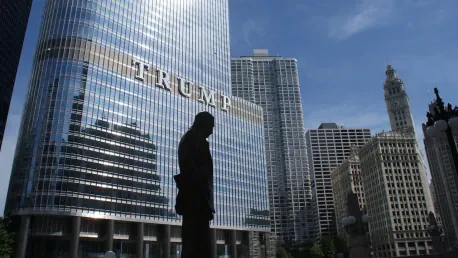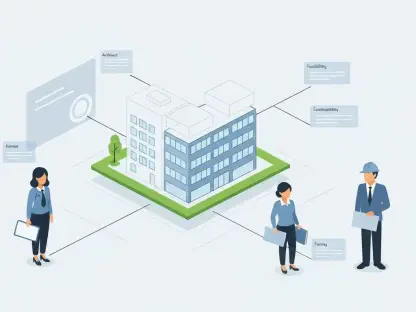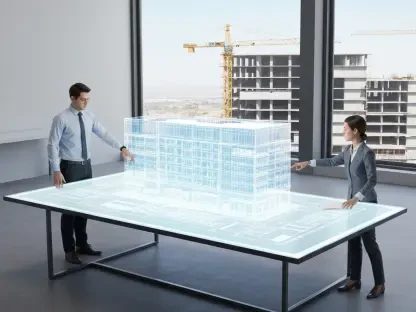As the construction industry braces for potential changes under the incoming Trump administration, questions loom over how trade policies could influence construction input prices in 2025. In October, construction input prices experienced a modest increase of 0.3%, primarily driven by rising energy costs. Despite this uptick, overall prices remain 0.2% lower than the previous year, with nonresidential construction input prices down by 0.5%. These fluctuations have caught the attention of economists and industry experts, who are closely monitoring the potential impacts of newly suggested tariffs.
Recent months saw price increases for concrete and copper, two critical materials in construction, yet total input costs have significantly decreased by 5% since reaching an all-time high in June 2022. Economist Anirban Basu noted this trend while emphasizing the complexity of the current pricing environment. Although the recent spike in energy prices is expected to be temporary, concerns regarding possible new tariffs under President-elect Trump’s administration could lead to significant price increases for a wide range of construction inputs, including domestically produced materials contesting with imports.
Temporary vs. Long-Term Factors Affecting Prices
Ken Simonson, chief economist at the Associated General Contractors of America, addressed the temporary nature of the recent surge in energy costs. Simonson pointed out that future prices for crude oil and copper, typically indicators of forthcoming producer price index trends, have recently seen declines. This suggests that near-term energy input costs might also fall as a result. Contractors in the construction industry have reaped benefits from the price stabilization observed throughout 2024, which has led to expectations for profit margins to expand into early 2025.
Despite the apparent short-term stabilization, uncertainty remains high due to the potential imposition of tariffs proposed by the new administration. These tariffs could provoke a rush to import materials before they take effect, possibly causing a temporary spike in prices. Basu highlighted the unpredictability of the new trade policies, noting that this uncertainty could compel contractors to adjust their strategies quickly in response to sudden market changes. As a result, contractors must stay vigilant and remain flexible to navigate the shifting economic landscape in the coming years.
While temporary factors like energy cost fluctuations might stabilize shortly, the pending trade policies present a more enduring challenge. Industry experts emphasize the importance of tracking these developments closely, as they could lead to long-term structural changes within the construction market. The mix of both short-lived and lasting factors has created a complex and uncertain outlook, causing industry stakeholders to exercise caution and strategic planning.
The Broader Implications of Trade Policies
The potential introduction of new trade policies under Trump’s administration has raised broader concerns about market stability and pricing trends across the construction industry. The proposed tariffs could extend beyond direct material costs, impacting various facets of the construction supply chain. This ripple effect might result in price increases for goods that are domestically produced but compete directly with imported counterparts.
Economists remain focused on understanding how these trade policies will unfold and the subsequent impacts on market equilibrium. If new tariffs are implemented, the construction industry might face increased input prices, which could reduce profit margins and hamper project feasibility. This possibility has led many contractors to consider alternative strategies, such as seeking out new supply sources or renegotiating current contracts to mitigate the risk of sudden price hikes.
Contractors are already feeling the pressure to adapt to the volatile market conditions. The mixed signals sent by current economic indicators have made it challenging to predict future trends accurately. Companies in the industry are urged to stay informed about potential policy changes and prepare for various scenarios that might arise. Proactive measures, such as stockpiling essential materials before price increases or diversifying supplier networks, could help mitigate some of the risks associated with impending trade policies.
Adapting to New Economic Realities
The construction industry is preparing for possible shifts under the Trump administration, raising questions on how new trade policies might affect construction input prices in 2025. In October, construction input prices increased modestly by 0.3%, mainly due to higher energy costs. However, even with this rise, overall prices remain 0.2% lower than the previous year, and nonresidential construction input prices have dropped by 0.5%. These changes have sparked interest from economists and industry experts who are cautiously observing the potential impact of proposed tariffs.
Concrete and copper prices, vital to construction, have increased in recent months, yet overall input costs have dropped by 5% since their peak in June 2022. Economist Anirban Basu pointed out this pattern, highlighting the intricate nature of current pricing. The recent surge in energy costs is expected to be temporary, but there are concerns that possible new tariffs under President-elect Trump could substantially raise prices for a wide variety of construction materials, including those produced domestically and competing with imports.









